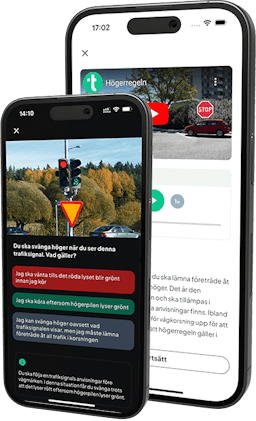Warning signs indicate types of hazards in order to make you aware and to be more cautious. The warning sign will indicate the particular hazard concerned; for example, children (A), junction (B) or roadworks (C).

Distance to the hazard
The distance between the warning sign and the hazard will depend on the speed limit that applies to the road:
- At 50 km/h or less, the sign will be located at 5 to 75 metres from the hazard.
- At 60 or 70 km/h, the sign will be located at 50 to 200 metres from the hazard.
- At 80 or 90 km/h, the sign will be located at 150 to 250 metres from the hazard.
- At 100 km/h or faster, the sign will be located at 200 to 400 metres from the hazard.
If the warning sign is at a specific distance from the hazard then this will be indicated on a supplementary plate (A). This combination (B) means there are roadworks in 100 metres.

This warning sign (A) means that there are several hazardous bends and the first one will be on the left. The supplementary plate (B) means that the first hazardous bend on the left is located 200 metres from the sign. The road is then bendy for a further 400 metres, which is to say 600 metres from the road sign. Road sign (C) means that there are several hazardous bends and the first one will be on the right.

Examples of common warning signs
- Hazardous right-hand bend (A)
- Narrowing road where the road will become narrower from the right-hand side (B)
- Pedestrian crossing: this road sign warns you that you are approaching a pedestrian crossing (C)

- Cyclists and mopeds (A)
- Deer (B)
- Oncoming traffic (C)

- Danger of accidents (A)
- Level crossing with barriers (B)
- Level crossing without barriers (C)

- The cross indicates how many tracks there are at a level crossing. Cross marking when there is one track (A)
- Cross marking when there are several tracks at the level crossing (B)

- Junction where the priority-to-the-right rule applies (A)
- Junction where road users on a connecting road are obliged to give way (B). The connecting road is represented by the thin lines. At the junction, vehicles coming from the right and the left have a duty to give way to you.



